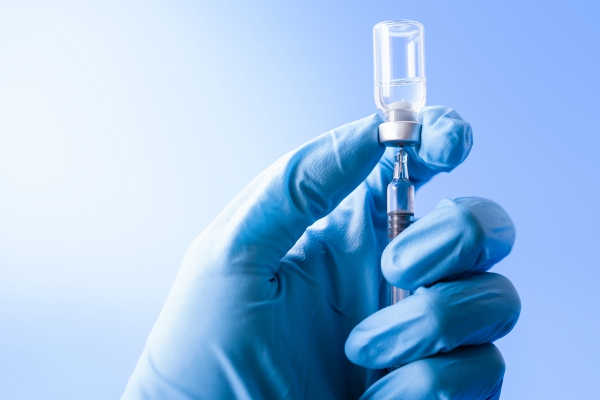What is diphtheria?
Diphtheria is a dangerous bacterial infection that affects the throat and mouth. Thanks to the development of vaccines against the bacterium, it is now extremely rare in the United States and other developed countries. The bacterium responsible for infection is known as Corynebacterium diphtheriae.
This condition is more common during winter or spring months and without antibiotic is can be transmitted for 2-6 weeks. It is usually treated with medications but can damage your kidney, heart and nervous system, in advanced stages. Unfortunately, children can die from the infection even with treatment.
What are the causes and risk factors of diphtheria?
The organism responsible for diphtheria infection is the bacterium Corynebacterium diphtheriae. It multiplies near or on the surface of the throat and is spread by airborne droplets or contaminated items. Airborne droplets occurs when an infected person coughs or sneezes and the infection is spread when a healthy person inhales those infected airborne droplets. The infection can be spread when handling an infected person’s belongings such as towels or used tissues and then touching your mouth.
Children and adults who did not have vaccinations against the bacterium are at increased risk of contracting the infection. In addition, people living in unsanitary or crowded conditions are also at risk.
Low socioeconomic status and a poor healthcare system can also contribute in getting the infection. In addition, domestic animals can act as a reservoir for human infection- the animals act as a transporter of the bacterium.

Since the development of the vaccines, it is rare in the United States and other countries. Examples of the vaccines include:
- DtaP or Tdap: These vaccines protect you against diphtheria, tetanus and pertussis (whooping cough).
- DT: This vaccines protects you against diphtheria and pertussis.
What are the signs and symptoms of diphtheria?
The signs and symptoms of diphtheria becomes apparent after 2-5 days and include:
- Sore throat
- Hoarseness od voice
- Difficulty breathing
- Increased breathing rate
- A thick greying membrane covering your tonsils and throat
- Runny nose
- Fever
- Chills
- Light-headedness
- Enlarged lymph nodes (swollen glands) un your neck
Certain people may not show any signs or symptoms of diphtheria and can still spread the infection. These people are known as carriers.
There are other disorders or conditions that may resemble diphtheria infection which your doctor needs to rule out and these include:
- Angioedema
- Myocarditis
- Epiglottitis
- Infective endocarditis
- Septic shock
- Kissing disease or infectious mononucleosis
- Pharyngitis
- Rheumatic fever
- Retropharyngeal abscess

Making a diagnosis

To make a diagnosis, your doctor will first take a detailed history from you to know more about your symptoms. After the history taking, your doctor will then perform a thorough physical examination to look for signs of diphtheria. To confirm the diagnosis, your doctor will order some tests and these include:
- Bacteriologic testing, culture and toxigenicity: A sample of saliva in your mouth and throat (throat swab) is taken and set to the laboratory. There, the sample is placed in a substance (culture medium) that facilitates its growth and replication. After some time, the contents are tested for diphtheria bacterium. In addition, the presence of toxin production is tested and is known as toxigenicity testing.
- Microscopy: This involves your doctor placing the sample under the microscope to look at the features of the organism.
- Complete Blood Count (CBC): A CBC is done to look for an increased white blood cell count (WBC).
- Urinalysis: This test is done to assess whether there is excessive loss of protein in urine which may occur due to diphtheria infection.
- Serum troponin I: This test is done to determine whether the heart is being affected, causing myocarditis (inflammation of the heart muscles). This is usually a complication of diphtheria infection.
- Chest x-ray or Computed Tomography (CT) scan: These imaging tests are done to assess for the presence of swollen epiglottis or narrowing of the throat space.
- Echocardiography: This test may be done if your doctor suspects that your heart is being affected. It uses sound waves to look at the structures inside your heart.
- Electrocardiography (ECG): An ECG is done to determine whether there is an abnormal heart rhythm or other problems with the heart.

It important to note that once diphtheria infection has been established, the Centers for Disease Control and Prevention (CDC) should be contacted.
What are the treatments of diphtheria?
As diphtheria infection is dangerous, once your doctor suspects diphtheria, he/she will start treatment immediately without awaiting the results from the laboratory and these include:
- Antibiotics: Antibiotics are used to kill the bacteria and examples include penicillin or erythromycin.
- Antitoxin: This medication is given to counteract the diphtheria toxin in the body and it is usually obtained from the CDC. It is usually injected into your muscle or vein. In addition, your doctor will perform a skin allergy test before administering the antitoxin. This is to prevent an allergic reaction from the antitoxin. In case of allergy against the antitoxin, your doctor will have to desensitize you to the antitoxin which involves him/her giving you the antitoxin in small doses initially and gradually increasing the dose.
What are the complications of diphtheria?

If diphtheria is left untreated, the following complications may ensue:
- Heart problems: When the diphtheria toxin spreads to your heart via your bloodstream, it affects your heart muscles causing myocarditis (inflammation of the heart muscles). This condition may eventually lead to heart failure ad sudden death.
- Breathing problems: The toxin produced by the bacteria damages the linings of the mouth and throat which may obstruct the air passage resulting in breathing difficulty.
- Nerve damage: The diphtheria toxin may damage the nerves located in your throat which may result in swallowing difficulty. In addition, it may also affect the nerves in your arms and legs, causing muscle weakness. Furthermore, if the muscles responsible for breathing are damaged, you will eventually require mechanical assistance to breathe.

Source:
J. Alastair, I. and Simon, M., 2016. Davidson's Essentials of Medicine. 2nd ed. London: ELSEVIER.
Parveen, K. and Michael, C., 2017. Kumar & Clarks Clinical Medicine. 9th ed. The Netherlands: ELSEVIER.
Lo, B., 2019. Diphtheria: Background, Pathophysiology, Epidemiology.
Lo, B., 2019. Workup.
CDC. Summary of notifiable diseases--United States, 2001.
Mandell, Bennett, Dolin. Corynebacterium diphtheriae. Principles and Practice of Infectious Diseases








